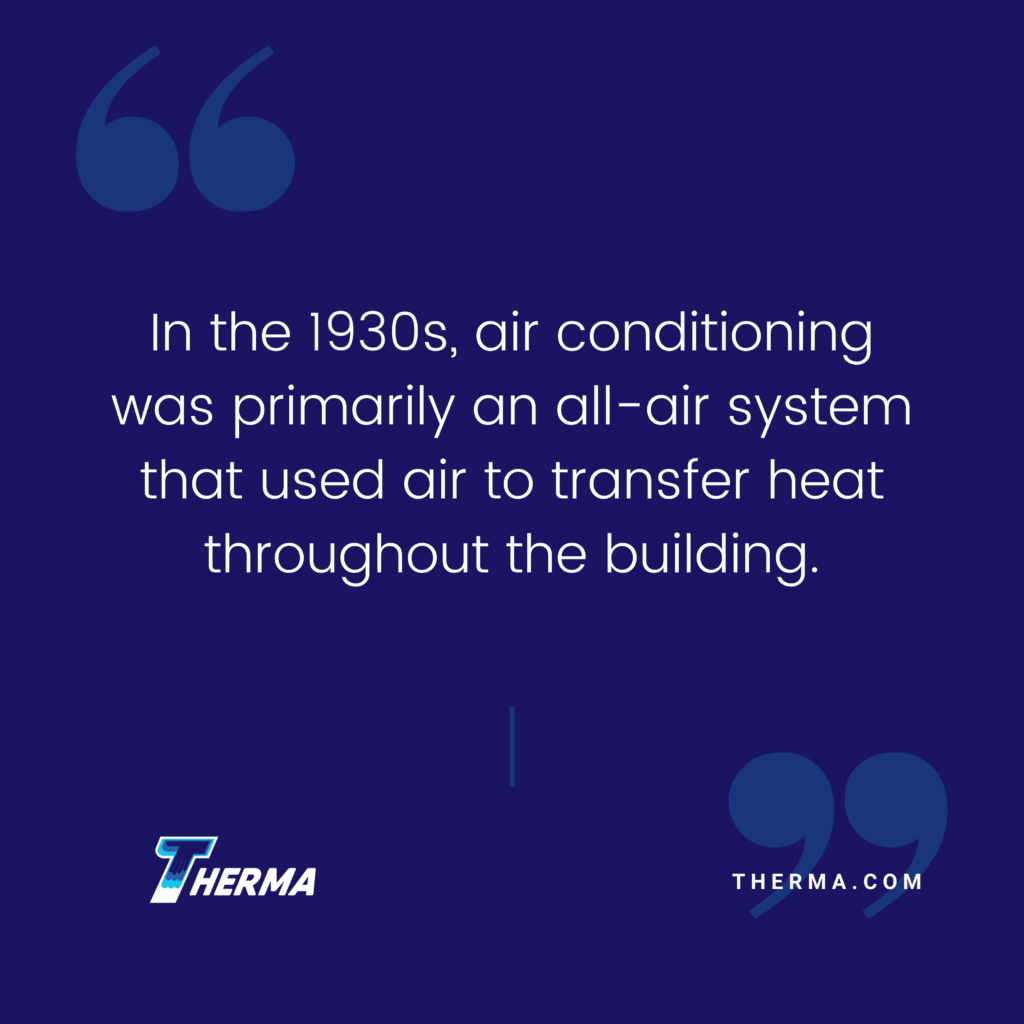by Patti Dees
Over the history of HVAC, some technologies have fallen in and out of favor, but the concepts behind them still drive modern innovation. The induction unit changed the world and continues to find a place in modern air-water systems.
What Are Induction Unit HVAC Systems?
Induction units are terminal units used to provide rooms with fresh air mixed with air from the room. Instead of changing the air temperature before it reaches the terminal unit, the mixed air passes over a heat exchanger housed within the unit itself. Historically, induction units were placed beneath windows.
History of Induction Units
In the 1930s, air conditioning was primarily an all-air system that used air to transfer heat throughout the building. These systems required large branching vertical ducts. This limited the amount of space that could be used, which was a problem for building owners.
Willis Carrier designed the induction unit, an air-water unit that used high-velocity air to reduce the footprint of air conditioning ductwork. This type of air unit was positioned beneath the windows along the perimeter of buildings to counter heat gain or loss associated with the external environment. As water is a better heat transfer medium than air, the induction units were also more efficient.
Their popularity grew worldwide. Eventually, improvements in materials and construction methods opened the way for other units, most notably variable-air-volume (VAV) systems. By the 1990s, induction units were reserved for existing buildings without the space for installing a VAV system. However, the concepts that made the induction unit so popular are making a comeback.
How Do Induction Units Work?
Induction units use ejector nozzles and high-velocity air to provide an area with mixed air. Outside air from a central air handler, referred to as primary air, is forced through nozzles in the unit, creating a negative pressure that draws in room air, called secondary air. The two sources mix and pass through a heat exchanger before venting back into the room. Water is often used within the heat exchanger to transfer heat to or from the air.
Like induction units, fan-coil units are terminal units that adjust the temperature within a limited space. Rather than using high-velocity nozzles, the unit contains a fan that draws in air to pass over a heat exchanger coil. In both cases, the temperature is adjusted within the unit.
While induction units offered efficiency improvements, the noise from the high-velocity air and the energy required were disadvantages. Fan-coil units are quieter. Since they can limit the amount of primary air to the minimum amount necessary, unlike induction units, fan-coil units also use less energy than the original induction units.
 When History Returns
When History Returns
The concepts behind induction units can be seen in the rise of modern air-water systems. Active chilled beams are considered current incarnations of the induction unit. Rather than being limited to positions beneath windows, they can be placed in ceilings and as wall units, especially along the perimeters of buildings.
As with early induction units, central air handlers provide primary air. However, improvements to nozzles allow them to run at lower pressures and resolve noise issues. Some modern units even provide variable airflow options.
Running water lines throughout a building can create a few maintenance concerns. Staff will need to monitor for leaks easily and be able to access valves for repairing or replacing sections. A building maintenance system (BMS) can help track water temperature, humidity control, and leak detection.
Moving Forward With Therma
Modern design features focus on improved efficiency and lower energy demands. But induced air and water-based heat transfer remain HVAC classic concepts. Therma’s professionals apply their extensive knowledge to every stage of HVAC systems, from design to maintenance. Contact us to find out the best way to heat or cool your building.
Patti draws on her background as a chemical engineer to share information with readers on technology, manufacturing, and construction.
Sources
American Society of Heating, Refrigerating and Air-Conditioning Engineers (ASHRAE) Journal – Air Conditioning in Office Buildings After World War II Air Conditioning in Office Buildings After World War II Air Conditioning
Air Conditioning Heat Refrigeration News (ACHR News) – Old Induction Units: Tear Out or Replace?
HVAC and Solar Energy Engineering Calculations – Induction (Air/Water) System – HVAC







